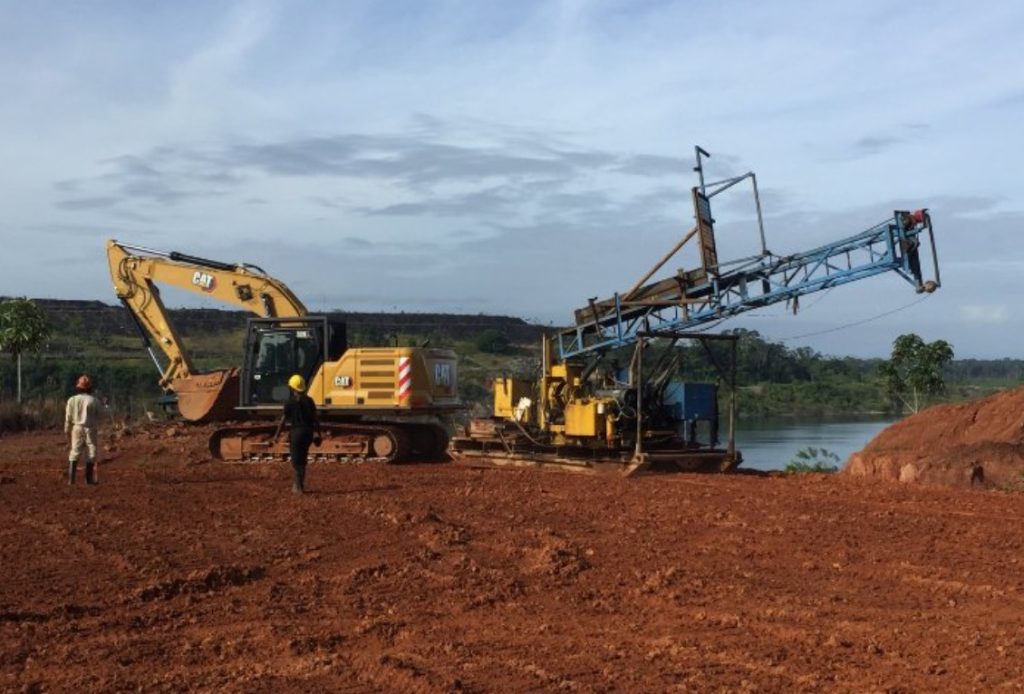Omai Gold Mines drills 4.07 g/t gold over 31.1 metres at Omai project, Guyana

Omai Gold Mines Corp. [OMG-TSXV; OMGGF-OTCQB; ON2-EU] reported additional outstanding drill results from the company’s Omai gold project in Guyana. Diamond drilling has focused on exploration targets and on demonstrating the significant expansion potential for the Wenot resource. A total of 3,569 metres have been completed in 11 holes in 2023. Results are reported for hole 23ODD-063, where visible gold was identified in 37 locations along 299 metres of core.
Highlights for hole 23ODD-063 at Wenot include 4.07 g/t gold over 31.1 metres; 3.38 g/t gold over 9.6 metres; 14.21 g/t gold over 1.8 metres; and 3.09 g/t gold over 6.8 metres.
Elaine Ellingham, president and CEO, commented: “These impressive new drill results continue to confirm the magnitude of the Wenot deposit, by demonstrating strike and depth continuity of significant gold mineralization. We have not seen any limitations to the Wenot deposit, and as such are confident that additional drilling can further expand the gold resources. At Wenot, 88% of the NI 43-101 mineral resource estimate lies above a 300-metre depth and the few holes that tested below confirm continuity and suggest that grades may increase with depth, particularly at the west end of the deposit.”
Hole 23ODD-063 is at the west end of Wenot, where no previous mining was done below the surficial saprolite. The NI 43-101 mineral resource estimate for Wenot spans a 2.4-km strike length, and the western 750 metres may be well suited as a starter pit for a future operation. Hole 23ODD-063 shows multiple gold zones within the broad Wenot shear corridor, including wide zones of good grade gold mineralization extending to surface (with no previous mining other than from surficial saprolite).
Hole 23ODD-063 intersected multiple zones of gold mineralization and, in aggregate, the composite intervals that grade greater than 0.30 g/t gold cover 138 metres of the 554 metres of drill core, or 25% of the hole. Hole 23ODD-063 tested 125 metres down dip from a 1994 exploration hole that intersected 1.23 g/t over 75 metres at a vertical depth of approximately 125 metres, where the correlating interval in -063 intersected 4.07 g/t gold over 31.1 metres, 5.36 g/t over 1.5 metres, 1.1 g/t over 6.5 metres and 14.21 g/t over 1.8 metres.
The width and the down dip extension of this zone and the additional zones bode extremely well for a potential open pit operation. These wide zones of gold mineralization occur within altered, sheared and veined zones within the metasedimentary package, whereas historical mining at Wenot was predominantly within the volcanics on the northern side of the main Wenot shear contact.
Hole 23ODD-063 also intersected the expected gold zones associated with the felsic dikes and quartz feldpar porphyry at and near the Wenot shear contact, that included 3.38 g/t gold over 9.6 metres, 3.09 g/t over 6.8 metres and 1.03 g/t gold over 4.5 metres. Although at Wenot there is not sufficient drilling at depth to be conclusive, results to date, including this new hole, support previous observations that grades within the Wenot deposit appear to increase with depth.
Due to the significance this western area holds for a potential future mine plan, an additional two to three drill holes are planned to pursue these up to 75 metres wide zones as well as the higher grade zones within this west Wenot area.
Results for additional holes in this program are pending and expected shortly.
Omai Gold Mines holds a 100% interest in the Omai prospecting licence, which includes the past-producing Omai gold mine in Guyana, and a 100% interest in the adjoining Eastern Flats mining permits. The company announced an updated mineral resource estimate October 20, 2022, that includes a 14% expansion to the Wenot shear-hosted gold deposit and an initial NI 43-101 MRE for the adjacent Gilt Creek intrusion-hosted deposit.
Once South America’s largest producing gold mine, Omai produced over 3.7 million ounces of gold between 1993 and 2005. Mining ceased at a time when the average gold price was less than US$400/oz. As a brownfields project, Omai benefits from good access and a wealth of historical data that provides knowledge of the geology, nature of the gold mineralization on the property, as well as metallurgy and historical recoveries. The company’s priorities for 2023 are to drill the key exploration targets that hold potential for significant new discoveries while continuing to demonstrate the expansion potential of the Wenot deposit.
